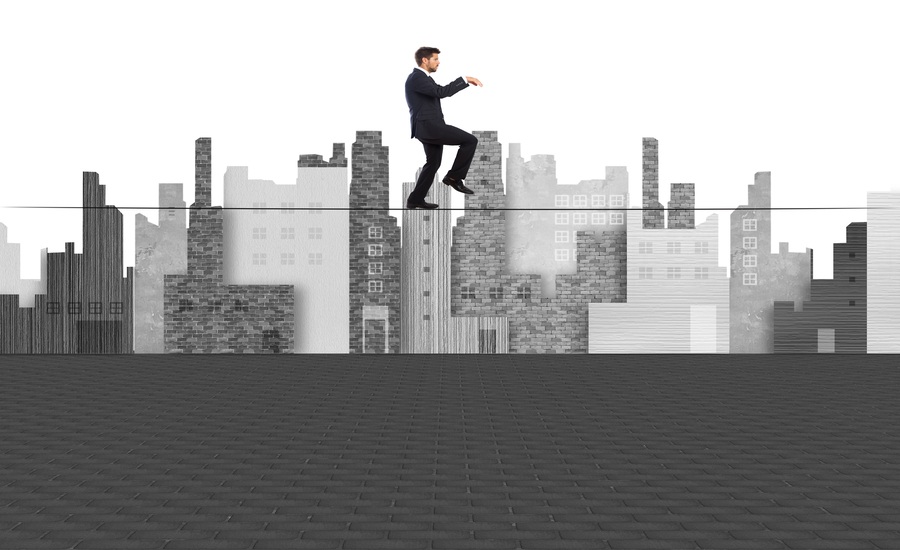Bridging the Gap fast-changing world, people are constantly trying to find balance between old memories and new realities. This balance is what we call “Bridging the Gap” a blend of nostalgia and modern living. Nostalgia connects us emotionally to our roots, while modern living pushes us forward into new technology, ideas, and lifestyles. Together, they shape how we think, create, and live in 2025.
The mix of past and present is everywhere in fashion, music, home design, social media, and even how families live together. It shows that people don’t want to let go of the comfort of the past, but they also want to move with the times.
The Power of Nostalgia
Nostalgia is more than just remembering old days it’s an emotional Bridging the Gap that connects people to happiness, comfort, and identity. When life feels uncertain or too fast, memories of the past bring stability and warmth. That’s why nostalgic trends keep coming back.
Scientists say nostalgia can reduce stress, increase optimism, and even make people feel more connected to others. When you hear an old song or see a vintage photo, your brain releases dopamine the “feel good” chemical reminding you of simpler times.
Keywords: emotional connection, vintage memories, psychological comfort.
Nostalgia is powerful because it’s not only about what we remember, but how we remember it. Each generation reshapes old memories to fit its own story.
Modern Living The Other Side of the Bridge
Modern living is fast, digital, and full of innovation. We live in a world of artificial intelligence, smart homes, and global communication. But this lifestyle can also feel overwhelming and detached. People scroll through screens but still crave real experiences and emotions.
That’s where nostalgia steps in to humanize technology and remind people of real connections.
Keywords: technology, digital lifestyle, balance, human connection.
The modern world is about choice, flexibility, and convenience. Yet, the best part of modern living is that it allows us to preserve the past while improving it. Smart homes can include vintage designs, and old traditions can exist beside new technologies.
Fashion Where Old Meets New
Fashion is one of the best examples of bridging nostalgia and modern living. What was once “old-fashioned” is now “vintage chic.” Designers are bringing back old trends like 90s denim, 80s colors, and Y2K accessories but mixing them with sustainable fabrics and modern fits.
Keywords: fashion trends, retro style, Y2K fashion, sustainable design.
People wear vintage pieces to express personality and history, while modern materials keep them comfortable and eco-friendly. It’s a perfect blend of memory and progress. The result? A generation that values both identity and innovation.
Home Design Mixing Retro Warmth with Modern Function
Home interiors today show how nostalgia and modern living blend beautifully. Retro furniture, warm colors, and vintage art are coming back, but in smart and sustainable ways. Many homes combine old-style patterns with modern appliances and eco-friendly lighting.
Keywords: home decor, retro interiors, modern design, sustainable living.
For example, a mid-century armchair can sit beside a minimalist smart lamp. A 70s-inspired wallpaper can look stunning in a modern open-space kitchen. This mix gives people comfort from the past with the convenience of the present. It’s not about choosing one or the other it’s about harmony.
Social Media A Digital Time Machine
Social media has turned nostalgia into a global movement. On platforms like TikTok and Instagram, users share throwback clips, old music, and “remember this?” trends that go viral. Even young people who never lived through the 80s or 90s celebrate them online.
Keywords: social media trends, digital nostalgia, online culture, retro content.
The internet allows people to relive collective memories and remix them into something new. A 90s TV show clip becomes a meme. A vintage outfit becomes a viral “aesthetic.” Nostalgia has evolved it’s not about the past itself, but how people reimagine it for today’s world.
Multigenerational Living Families Bridging Generations
In many countries, families are returning to multigenerational homes where grandparents, parents, and children live together. It’s partly driven by economic factors but also by emotional ones the desire for closeness, care, and shared values.
Keywords: family lifestyle, multigenerational homes, cultural traditions, shared living.
These homes mix nostalgic traditions like family meals and storytelling with modern spaces and technology. Private rooms, flexible furniture, and smart security systems make it easier for everyone to live together comfortably. This shows that nostalgia isn’t stuck in the past it’s alive and growing with modern needs.
Nostalgia Marketing: Emotion That Sells
Brands have discovered that nostalgia sells but only when used authentically. Nostalgia marketing uses memories to create emotional connections with audiences. People love products that remind them of their childhood, favorite shows, or old designs.
Keywords: nostalgia marketing, emotional branding, vintage advertising, brand storytelling.
For example, snack companies bring back classic packaging, and toy brands reintroduce old models. But it’s not just about looking backward successful brands remix the past with new ideas. They update logos, improve materials, and include modern values like diversity and sustainability.
The secret to good nostalgia marketing is respect honoring the past while staying relevant to today’s world.
Technology with a Touch of the Past
Even technology has become nostalgic. Old-style gadgets are being redesigned with modern power. Vinyl records, instant cameras, and classic video game consoles are back not because people reject progress, but because they crave tangible experiences in a digital world.
Keywords: retro tech, innovation, hybrid lifestyle, digital nostalgia.
People want to feel technology again to press a button, hold a photo, or hear the crackle of a record. These experiences remind them that technology doesn’t have to erase the past; it can enhance it.
Designing a Life That Blends Old and New
Living at the crossroads of nostalgia and modern life means designing your lifestyle intentionally. It’s about knowing what to keep and what to evolve. Here are simple ways to balance both worlds:
- Keep one meaningful object from the past in every room.
- Use vintage photos or colors in modern layouts.
- Practice old traditions like letter writing or home cooking with modern tools.
- Blend music playlists mix classic hits with new artists.
- Create spaces that welcome both digital and face-to-face interactions.
Keywords: lifestyle balance, modern habits, retro revival, cultural identity.
This combination creates a life that feels grounded yet adaptable a true reflection of where we’ve been and where we’re going.
The Emotional Benefits of Bridging the Gap
Bridging the gap between nostalgia and modern living offers powerful emotional benefits:
- Connection: It links generations and cultures.
- Comfort: Familiar memories reduce stress in a fast-paced world.
- Identity: Mixing past and present builds a stronger sense of self.
- Creativity: Reimagining old things in new ways inspires innovation.
Keywords: emotional wellbeing, creativity, connection, self-expression.
When people use nostalgia wisely, they don’t escape the present they enrich it. The past becomes a tool for meaning, not a cage of memory.
Challenges of Nostalgia in Modern Life
While nostalgia feels good, it can also be tricky. Too much focus on the past can stop growth. If brands or individuals use nostalgia without innovation, it may seem outdated or fake. True success lies in balance.
Keywords: cultural balance, authenticity, ethical marketing.
Cultural sensitivity is also important. Borrowing nostalgic symbols without understanding their roots can be disrespectful. Modern creators must respect history while adapting it thoughtfully.
Practical Tips for Using Nostalgia Today
For Creators:
Tell stories that connect memory with relevance. Show how old experiences still matter today.
For Homeowners:
Combine antique or inherited pieces with modern furniture. Mix materials wood with metal, vintage with minimal.
For Marketers:
Focus on emotional truth. Ask: Why does this memory matter? Then build campaigns that link it to modern values.
Keywords: storytelling, emotional design, creative living, nostalgia ideas.
When nostalgia is used thoughtfully, it doesn’t hold us back it helps us move forward.
The Future Where Nostalgia and Innovation Walk Together
As we move into 2025 and beyond, nostalgia will continue to evolve. AI, virtual reality, and digital art will allow people to relive memories in new ways. Imagine visiting your childhood home in a virtual world or hearing AI recreate lost voices from history.
Keywords: future trends, digital innovation, AI nostalgia, cultural future.
The goal is not to live in the past, but to use it as inspiration for building meaningful, human-centered technology. Nostalgia reminds innovators to design with heart, not just code.
Conclusion
Bridging the gap between nostalgia and modern living is about more than style or trend it’s about connection. It allows us to honor where we came from while shaping a better, more thoughtful future.
The past gives us comfort, and the present gives us tools. When we mix them, we create something timeless a culture that remembers but also evolves. That’s what it truly means to live at the crossroads of nostalgia and modern life.
FAQs
Q1. What does bridging the gap mean?
It means connecting old traditions, memories, and values with modern ideas, technology, and lifestyles to create a balanced way of living.
Q2. Why do people love nostalgia so much?
Nostalgia brings comfort and emotional security. It reminds us of happy times and gives meaning during uncertain or stressful periods.
Q3. How can I mix old and modern in my home?
Start with one vintage item, use warm retro colors, and balance them with clean modern furniture or lighting.
Q4. Is nostalgia bad for progress?
Not at all. When used positively, nostalgia inspires innovation. It reminds us of what truly matters while helping us move forward.
Q5. What industries benefit most from nostalgia?
Fashion, design, film, marketing, and technology all use nostalgia to connect emotionally with audiences and create lasting loyalty.
Q6. How can small brands use nostalgia marketing?
By telling authentic stories, using classic visuals with modern updates, and showing how their product connects to shared memories.
Q7. Will nostalgia stay popular in the future?
Yes. As technology advances, people will keep looking for emotional warmth and familiarity making nostalgia timeless.
Final Thought
Bridging the gap between nostalgia and modern living is not just a cultural moment it’s a movement. It shows how humans adapt, remember, and create meaning in a rapidly changing world. By mixing memory with modernity, we create a life that feels both new and beautifully familiar.


